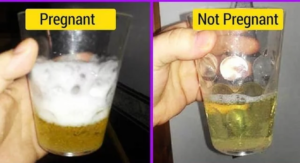
Uganda Today Edition: Home Pregnancy Tests Using Kitchen Supplies: Myth or Reality?
Pregnancy tests have evolved significantly over the years, with modern tests being highly accurate and convenient. However, many people still turn to traditional methods, using common kitchen supplies to determine if they are pregnant. This article explores five such home pregnancy tests, their procedures, and the reliability of their results.
1. The Salt Pregnancy Test
Procedure:
- Collect a small amount of first-morning urine in a clean container.
- Add a couple of teaspoons of salt to the urine.
- Wait for a few minutes to observe any reaction.
Observation:
- Positive Result: The mixture becomes milky or forms cheesy clumps.
- Negative Result: No significant change in the mixture.
Efficacy: There is no scientific evidence to support the salt pregnancy test. Changes in the mixture are likely due to the salt dissolving in the urine rather than any specific reaction indicating pregnancy.
2. The Sugar Pregnancy Test
Procedure:
- Collect first-morning urine in a clean container.
- Add a few teaspoons of sugar to the urine.
- Wait for about five minutes to observe any reaction.
Observation:
- Positive Result: The sugar clumps together and does not dissolve.
- Negative Result: The sugar dissolves quickly in the urine.
Efficacy: The sugar test lacks scientific backing. The clumping of sugar can be influenced by various factors, such as the temperature and concentration of the urine, rather than the presence of pregnancy hormones.
3. The Onion Pregnancy Test
Procedure:
- Peel and cut an onion into two halves.
- Place one half of the onion near the vaginal area overnight.
- Observe any changes or reactions the next morning.
Observation:
- Positive Result: A strong onion smell in the breath or vaginal area indicates pregnancy.
- Negative Result: No noticeable change.
Efficacy: This method is based on ancient folklore and has no scientific foundation. The presence or absence of the onion smell is not a reliable indicator of pregnancy.
4. The Toothpaste Pregnancy Test
Procedure:
- Collect first-morning urine in a clean container.
- Add a small amount of white toothpaste to the urine.
- Wait for a few minutes to observe any reaction.
Observation:
- Positive Result: The toothpaste turns blue or froths.
- Negative Result: No significant change in the toothpaste.
Efficacy: The toothpaste pregnancy test is not scientifically validated. Any color change or frothing is more likely due to the reaction between the chemicals in the toothpaste and the urine, rather than a pregnancy indicator.
5. The Baking Soda Pregnancy Test
Procedure:
- Collect first-morning urine in a clean container.
- Add a couple of teaspoons of baking soda to the urine.
- Wait for a few minutes to observe any reaction.
Observation:
- Positive Result: The mixture fizzes and bubbles.
- Negative Result: No significant reaction.
Efficacy: The baking soda test is based on the pH level of the urine, which can vary for numerous reasons unrelated to pregnancy. Therefore, this method is not a reliable pregnancy test.
Conclusion
While these home pregnancy tests using kitchen supplies can be intriguing and fun to try, they lack scientific reliability and should not be trusted for accurate results. For those seeking to confirm a pregnancy, it is best to use a commercially available pregnancy test or consult a healthcare professional for confirmation. These modern methods provide accurate results by detecting the pregnancy hormone, human chorionic gonadotropin (hCG), ensuring you get the information you need promptly and reliably.
For more insightful stories and reliable health information, stay tuned to www.ugandatoday.co.ug.
